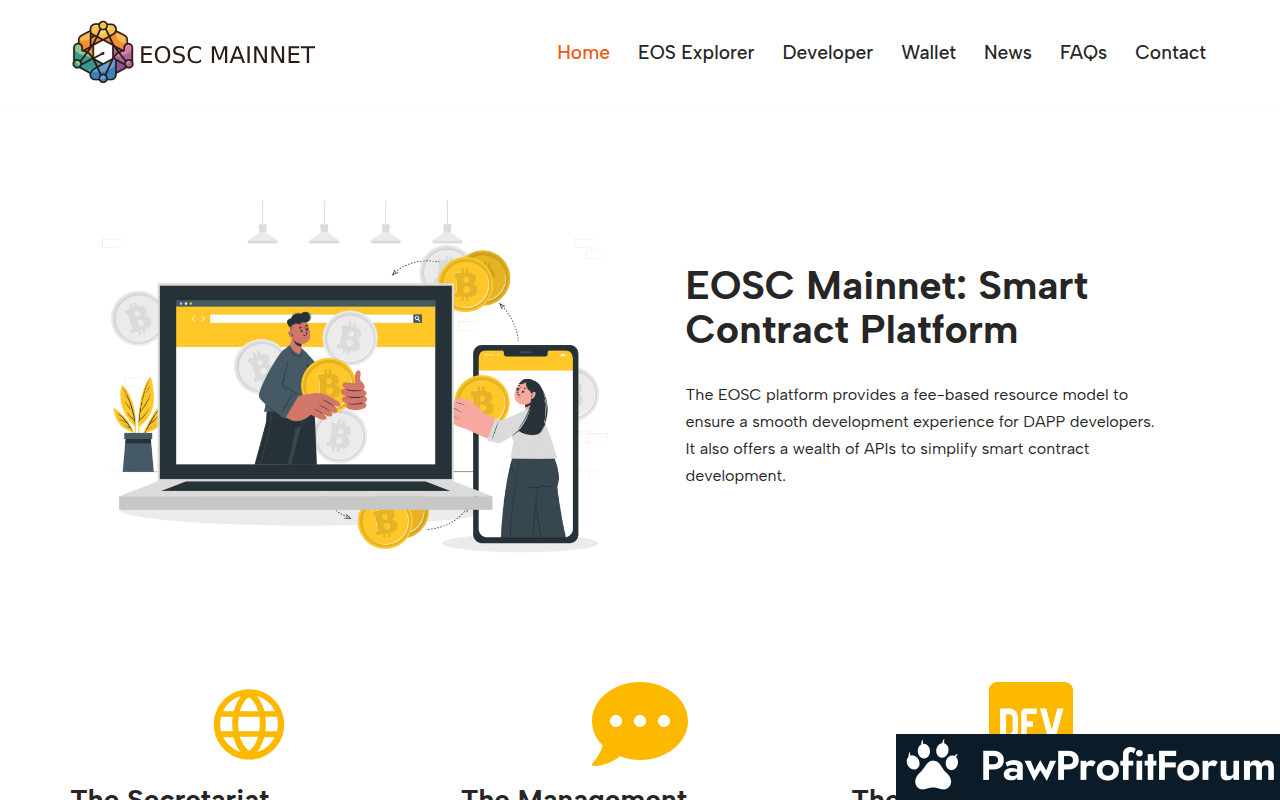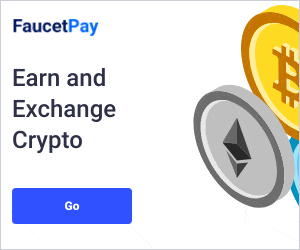EOSForce (EOSC) describes itself as a decentralized high-performance smart contract platform.
Based on different governance concepts, the EOSC community has optimized the election mechanism of EOSIO and launched the EOSC mainnet. The EOSC Network aims to evolve towards its vision of a decentralized high-performance smart contract platform.
The EOSC token plays a crucial role within the ecosystem, primarily used for voting rewards on the main chain. The governance structure of EOS Force is decentralized, featuring a community autonomous organization that includes the Secretariat, Management Committee, and Development Team. This structure ensures that decision-making processes are community-driven and transparent.
EOS Force has optimized the election mechanism of EOSIO, launching its own mainnet to better align with its governance concepts. The platform also incorporates a consensus mechanism, virtual machine, tool kits, and smart contracts, providing a robust infrastructure for developers and users alike.
The community's presence extends to various social media platforms, including Twitter and GitHub, facilitating active engagement and collaboration. This multi-faceted approach underscores EOS Force's commitment to evolving as a decentralized high-performance smart contract platform.
One of the standout features of EOS Force is its use of blockchain virtual machines. These virtual machines enable the execution of smart contracts, which are self-executing contracts with the terms directly written into code. This technology allows for the automation of complex processes and transactions, reducing the need for intermediaries and enhancing efficiency.
To safeguard against malicious activities, EOS Force employs a combination of privacy computing and cross-chain solutions. Privacy computing ensures that sensitive data remains confidential, even when processed on the blockchain. This is crucial for maintaining user trust and protecting personal information. Cross-chain solutions, on the other hand, facilitate interoperability between different blockchain networks. This means that EOS Force can interact with other blockchains, allowing for the seamless transfer of assets and data across various platforms.
On-chain governance is another critical aspect of EOS Force. This system allows the community to participate in decision-making processes directly on the blockchain. The EOSC community is structured as a decentralized autonomous organization (DAO), which includes a Secretariat, Management Committee, and Development Team. This decentralized structure ensures that no single entity has control over the network, promoting transparency and fairness.
The EOSC Wallet is an essential tool within the EOS Force ecosystem. It offers several security features, such as real-time transaction tracking and detailed block information. Users can also interact with smart contracts directly through the wallet, making it a versatile and secure option for managing digital assets.
A unique feature of EOS Force is its decentralized budget system, managed by the Management Committee. This system allocates resources for the development and maintenance of the network, ensuring that funds are used efficiently and transparently.
The EOSC Network has optimized the election mechanism of EOSIO, launching its mainnet to support its vision of a decentralized high-performance smart contract platform. This optimization enhances the efficiency and security of the network, making it more resilient to attacks and capable of handling a high volume of transactions.
The development of the main chain by the EOS Force Development Team underscores the platform's commitment to creating an open infrastructure. This focus on open infrastructure ensures that the network remains accessible and adaptable to future technological advancements.
In essence, the technology behind EOS Force encompasses a range of advanced features, including blockchain virtual machines, privacy computing, cross-chain solutions, on-chain governance, and a decentralized high-performance smart contract platform.
One of the primary applications of EOS Force is in the realm of open infrastructure. This allows developers to build and deploy decentralized applications (dApps) on a robust and scalable platform. The blockchain virtual machines provided by EOS Force enable efficient execution of smart contracts, which are self-executing contracts with the terms directly written into code.
Privacy computing is another significant application. EOS Force supports privacy-preserving computations, ensuring that sensitive data remains confidential while still being processed on the blockchain. This is particularly useful in industries like finance and healthcare, where data privacy is paramount.
Cross-chain solutions are also a key feature of EOS Force. These solutions enable interoperability between different blockchain networks, allowing for seamless transfer of assets and data across various platforms. This enhances the overall utility and connectivity of blockchain ecosystems.
On-chain governance is a critical aspect of EOS Force. The governance token, EOSC, allows holders to suggest and vote on changes within the network. This democratic approach ensures that the community has a say in the platform's development and future direction.
The platform also supports decentralized high-performance smart contracts, which are essential for applications requiring high throughput and low latency. This makes EOS Force suitable for industries such as gaming, where performance is crucial.
For developers, EOS Force offers a more friendly smart contract development environment. The customizable blockchain development framework provided by EOS Force allows developers to tailor the blockchain to their specific needs, enhancing flexibility and innovation.
Community autonomous organization is another application, enabling decentralized decision-making and management within the community. This fosters a collaborative environment where users can contribute to the platform's growth and governance.
Additionally, EOS Force provides tools like the EOSC Wallet and EOS Explorer. These tools help users manage digital assets, interact with smart contracts, and participate in community governance, making the platform accessible and user-friendly.
In the realm of finance, gaming, sports, and clean energy, EOS Force's capabilities are being explored to create innovative solutions that leverage blockchain technology's transparency, security, and efficiency.
The formation of the EOS Force development team laid the foundation for the project, bringing together experts dedicated to enhancing blockchain technology. This team focused on optimizing the election mechanism of EOSIO, setting the stage for future advancements.
A significant milestone for EOS Force was the launch of its mainnet. This event marked the transition from concept to reality, enabling the deployment of decentralized applications (dApps) on the EOSC network. The mainnet launch demonstrated the project's commitment to providing a robust and scalable platform for smart contracts.
In addition to technical developments, EOS Force has engaged its community through various airdrop events. These events distributed EOSC tokens to users, fostering a sense of participation and ownership within the community. Airdrops have been a strategic tool for increasing awareness and adoption of the EOSC network.
EOS Force's vision of a decentralized high-performance smart contract platform continues to evolve. The project remains focused on refining its governance model and enhancing the overall user experience. The EOSC community plays a crucial role in this evolution, contributing to the network's growth and development.
EOS Force has navigated the challenges of the cryptocurrency market, maintaining its commitment to innovation and decentralization. The project's journey reflects its dedication to creating a more efficient and inclusive blockchain ecosystem.
Based on different governance concepts, the EOSC community has optimized the election mechanism of EOSIO and launched the EOSC mainnet. The EOSC Network aims to evolve towards its vision of a decentralized high-performance smart contract platform.
What is EOS Force?
EOS Force (EOSC) stands out as a decentralized high-performance smart contract platform, leveraging a layered architecture to enhance its capabilities. Built on EOSIO technology, EOS Force features a multi-chain structured blockchain network, with a single settlement layer main chain. This architecture supports cursor movement keystrokes, optimizing the user experience and operational efficiency.The EOSC token plays a crucial role within the ecosystem, primarily used for voting rewards on the main chain. The governance structure of EOS Force is decentralized, featuring a community autonomous organization that includes the Secretariat, Management Committee, and Development Team. This structure ensures that decision-making processes are community-driven and transparent.
EOS Force has optimized the election mechanism of EOSIO, launching its own mainnet to better align with its governance concepts. The platform also incorporates a consensus mechanism, virtual machine, tool kits, and smart contracts, providing a robust infrastructure for developers and users alike.
The community's presence extends to various social media platforms, including Twitter and GitHub, facilitating active engagement and collaboration. This multi-faceted approach underscores EOS Force's commitment to evolving as a decentralized high-performance smart contract platform.
What is the technology behind EOS Force?
EOS Force (EOSC) represents a sophisticated blockchain platform designed to deliver high performance and decentralized governance. At its core, EOS Force operates on a blockchain that integrates several advanced technologies, ensuring robust functionality and security.One of the standout features of EOS Force is its use of blockchain virtual machines. These virtual machines enable the execution of smart contracts, which are self-executing contracts with the terms directly written into code. This technology allows for the automation of complex processes and transactions, reducing the need for intermediaries and enhancing efficiency.
To safeguard against malicious activities, EOS Force employs a combination of privacy computing and cross-chain solutions. Privacy computing ensures that sensitive data remains confidential, even when processed on the blockchain. This is crucial for maintaining user trust and protecting personal information. Cross-chain solutions, on the other hand, facilitate interoperability between different blockchain networks. This means that EOS Force can interact with other blockchains, allowing for the seamless transfer of assets and data across various platforms.
On-chain governance is another critical aspect of EOS Force. This system allows the community to participate in decision-making processes directly on the blockchain. The EOSC community is structured as a decentralized autonomous organization (DAO), which includes a Secretariat, Management Committee, and Development Team. This decentralized structure ensures that no single entity has control over the network, promoting transparency and fairness.
The EOSC Wallet is an essential tool within the EOS Force ecosystem. It offers several security features, such as real-time transaction tracking and detailed block information. Users can also interact with smart contracts directly through the wallet, making it a versatile and secure option for managing digital assets.
A unique feature of EOS Force is its decentralized budget system, managed by the Management Committee. This system allocates resources for the development and maintenance of the network, ensuring that funds are used efficiently and transparently.
The EOSC Network has optimized the election mechanism of EOSIO, launching its mainnet to support its vision of a decentralized high-performance smart contract platform. This optimization enhances the efficiency and security of the network, making it more resilient to attacks and capable of handling a high volume of transactions.
The development of the main chain by the EOS Force Development Team underscores the platform's commitment to creating an open infrastructure. This focus on open infrastructure ensures that the network remains accessible and adaptable to future technological advancements.
In essence, the technology behind EOS Force encompasses a range of advanced features, including blockchain virtual machines, privacy computing, cross-chain solutions, on-chain governance, and a decentralized high-performance smart contract platform.
What are the real-world applications of EOS Force?
EOS Force (EOSC) is a decentralized high-performance smart contract platform designed to enhance blockchain technology's capabilities. It offers a variety of real-world applications that cater to different sectors and user needs.One of the primary applications of EOS Force is in the realm of open infrastructure. This allows developers to build and deploy decentralized applications (dApps) on a robust and scalable platform. The blockchain virtual machines provided by EOS Force enable efficient execution of smart contracts, which are self-executing contracts with the terms directly written into code.
Privacy computing is another significant application. EOS Force supports privacy-preserving computations, ensuring that sensitive data remains confidential while still being processed on the blockchain. This is particularly useful in industries like finance and healthcare, where data privacy is paramount.
Cross-chain solutions are also a key feature of EOS Force. These solutions enable interoperability between different blockchain networks, allowing for seamless transfer of assets and data across various platforms. This enhances the overall utility and connectivity of blockchain ecosystems.
On-chain governance is a critical aspect of EOS Force. The governance token, EOSC, allows holders to suggest and vote on changes within the network. This democratic approach ensures that the community has a say in the platform's development and future direction.
The platform also supports decentralized high-performance smart contracts, which are essential for applications requiring high throughput and low latency. This makes EOS Force suitable for industries such as gaming, where performance is crucial.
For developers, EOS Force offers a more friendly smart contract development environment. The customizable blockchain development framework provided by EOS Force allows developers to tailor the blockchain to their specific needs, enhancing flexibility and innovation.
Community autonomous organization is another application, enabling decentralized decision-making and management within the community. This fosters a collaborative environment where users can contribute to the platform's growth and governance.
Additionally, EOS Force provides tools like the EOSC Wallet and EOS Explorer. These tools help users manage digital assets, interact with smart contracts, and participate in community governance, making the platform accessible and user-friendly.
In the realm of finance, gaming, sports, and clean energy, EOS Force's capabilities are being explored to create innovative solutions that leverage blockchain technology's transparency, security, and efficiency.
What key events have there been for EOS Force?
EOS Force (EOSC) emerged as a decentralized high-performance smart contract platform, aiming to refine the governance mechanisms of EOSIO. The journey of EOS Force has been marked by several pivotal events that have shaped its development and community engagement.The formation of the EOS Force development team laid the foundation for the project, bringing together experts dedicated to enhancing blockchain technology. This team focused on optimizing the election mechanism of EOSIO, setting the stage for future advancements.
A significant milestone for EOS Force was the launch of its mainnet. This event marked the transition from concept to reality, enabling the deployment of decentralized applications (dApps) on the EOSC network. The mainnet launch demonstrated the project's commitment to providing a robust and scalable platform for smart contracts.
In addition to technical developments, EOS Force has engaged its community through various airdrop events. These events distributed EOSC tokens to users, fostering a sense of participation and ownership within the community. Airdrops have been a strategic tool for increasing awareness and adoption of the EOSC network.
EOS Force's vision of a decentralized high-performance smart contract platform continues to evolve. The project remains focused on refining its governance model and enhancing the overall user experience. The EOSC community plays a crucial role in this evolution, contributing to the network's growth and development.
EOS Force has navigated the challenges of the cryptocurrency market, maintaining its commitment to innovation and decentralization. The project's journey reflects its dedication to creating a more efficient and inclusive blockchain ecosystem.
Who are the founders of EOS Force?
EOSForce (EOSC) is a decentralized high-performance smart contract platform. The founders of EOS Force are the EOS Force Development Team. Key figures include Yves La Rose, Zack Gall, Ted Cahall, and Bart Wyatt. These individuals have diverse backgrounds in blockchain technology and development. Yves La Rose is known for his involvement in various blockchain projects, while Zack Gall has been a prominent voice in the EOS community. Ted Cahall and Bart Wyatt bring extensive experience in software engineering and blockchain solutions. Some founders prefer to remain anonymous, likely for privacy reasons.| Website | www.eosforce.io |
| Website | eosforce-1.gitbook.io/eosc/ |
| Socials | twitter.com/eosforce |
| Socials | github.com/eosforce/eosforce |
| Socials | t.me/eosforce_en |
| Explorers | explorer.eosforce.io/#/en |







